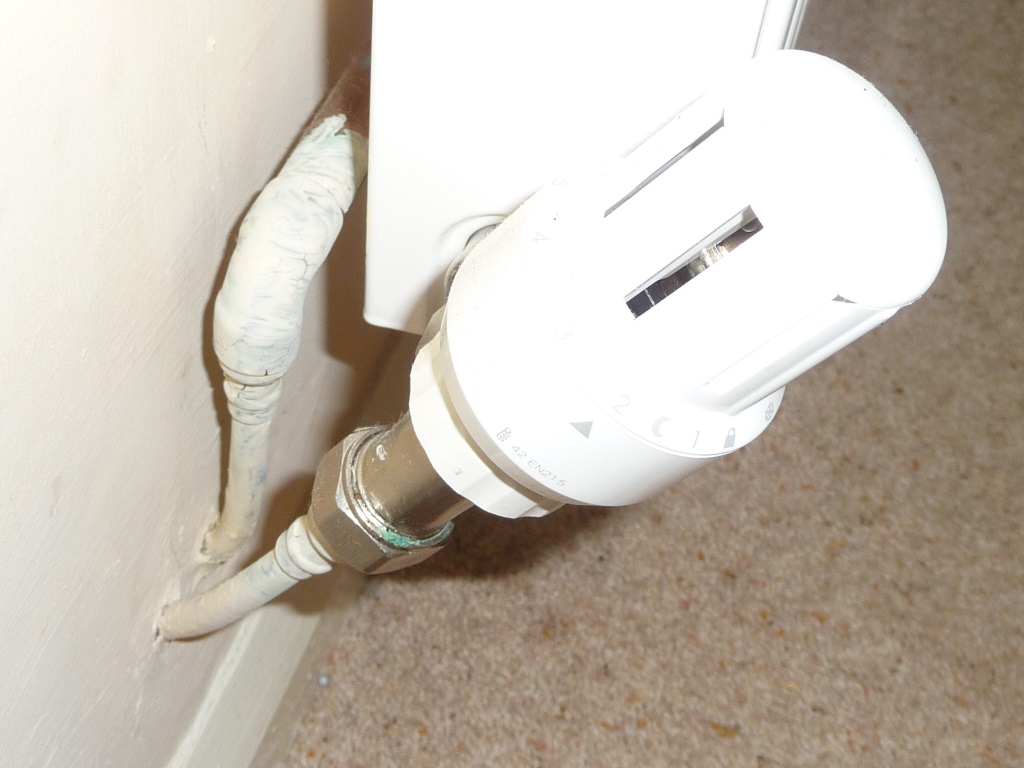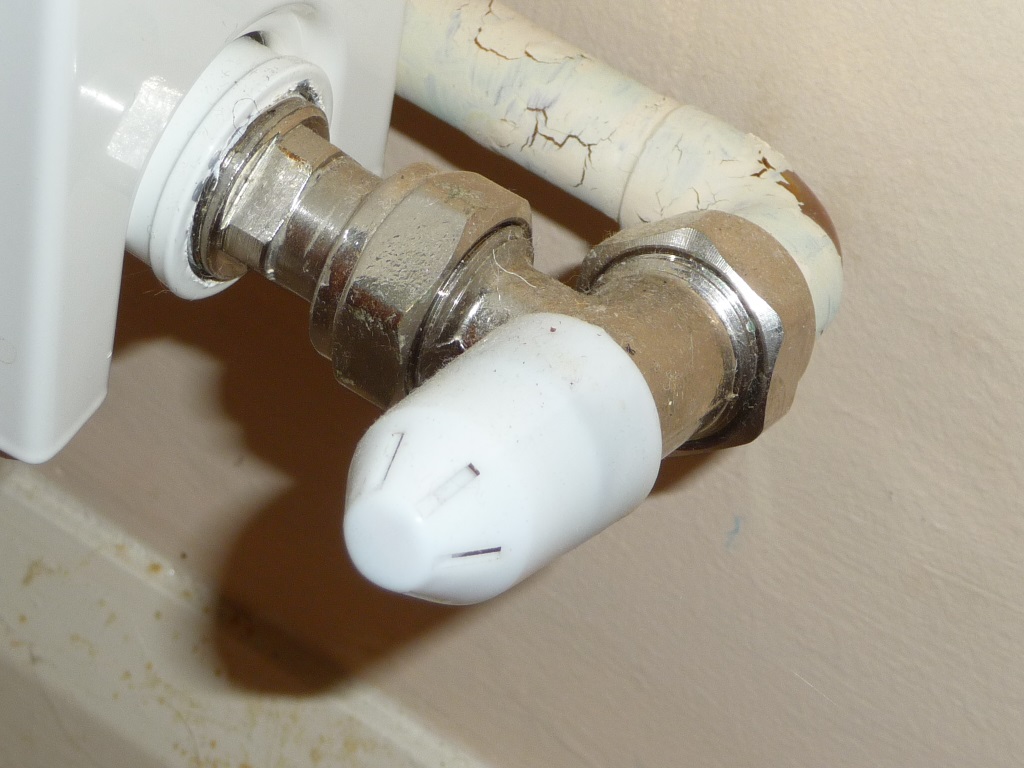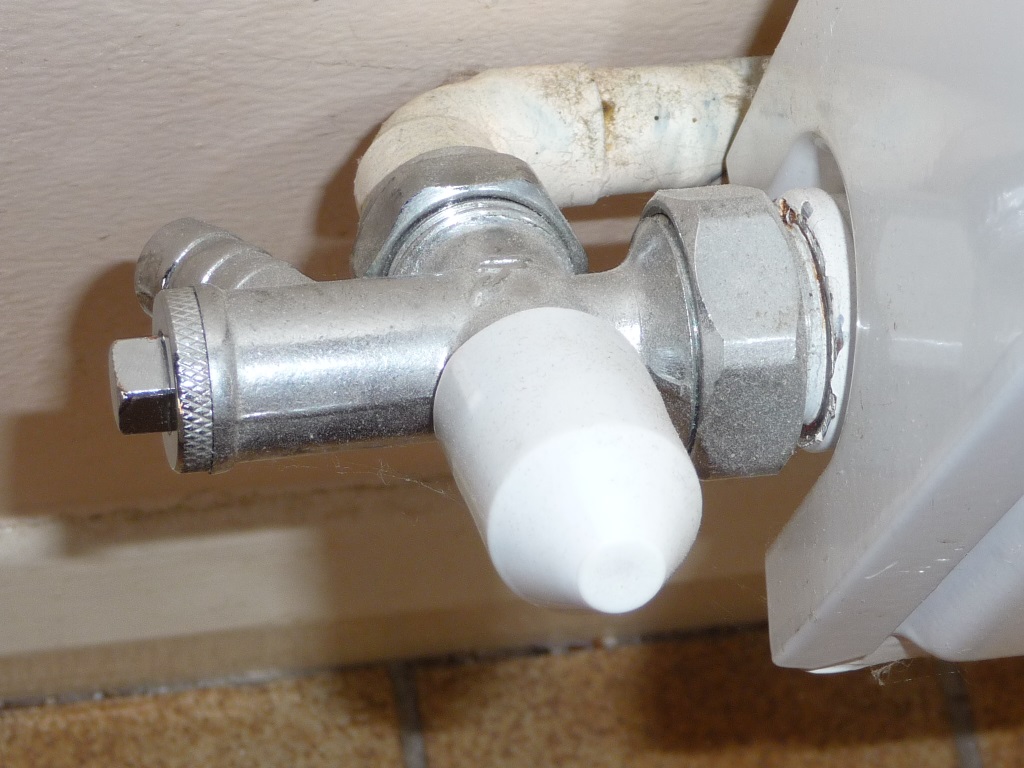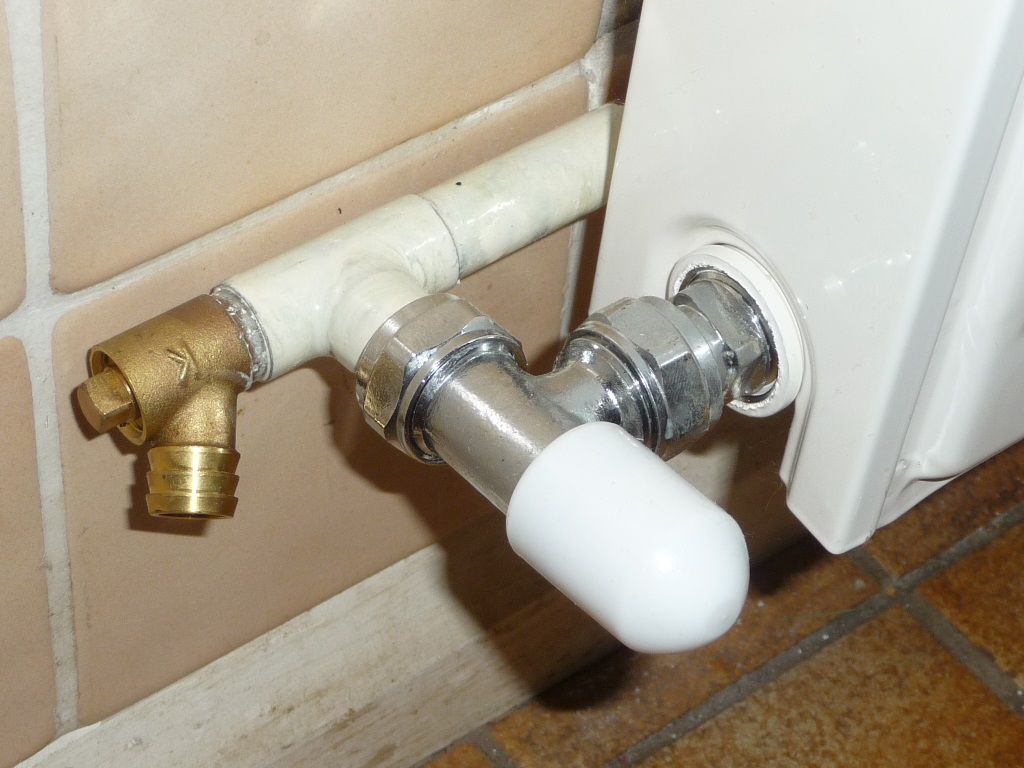Replacing microbore radiators
My heating system uses 1/4″ copper pipe, which I think was called microbore at the time. Both pipes went to a valve at one end of the radiator. There were a variety of valves fitted, but most of them were like this one.

I investigated the best method for replacing the radiators and valves and found that using standard 15mm fittings with 15/8mm reducers was probably the best option. This involves removing the old radiator and valve, carefully removing the olives from the existing pipes with a junior hacksaw to cut a slot, and a screwdriver to pry it off.
Some of the pipes go under the screed on the ground floor, so to blow water out of the pipes for soldering, I used an air pump intended for inflating inflatable mattresses. It’s reducer fits the 1/4″ pipe. A couple of 8mm compression stop ends are useful to temporarily block the ends of the pipes. Don’t do them up tight, or they won’t come off. Plastic push-on ones would be even better, but I couldn’t find any.
It is somewhat a work of art to fit the new radiator in position so that the new valve and reducer line up nicely without having to cut or extend the existing pipe. I eventually used blocks of wood to get the radiator in position so I could offer up the fittings.
The 15/8mm reducers are a loose fit on the 1/4″ pipe, but extra solder can be fed in to the top inside the reducer to ensure it doesn’t leak. To reach the other end of the radiator you need a length of 15mm copper pipe and two elbow fittings.



This particular thermostatic valve and lockshield came free with the radiator from Screwfix. as part of an offer. Both this type of valve and lockshield are reversible, so if you want them in line with the radiator, you can. If you forget to wash the flux off before you paint the pipe, the paint can flake off, as here.

I used this type of all-in-one lockshield and drain valve initially, but when used like this, the drain valve ends up facing the wall, which is inconvenient, so for the last radiator, which is the best one for draining the system, I used a separate brass drain valve.

It just requires a 15mm tee fitting instead of an elbow. Remember to take the inner part of the drain valve with the plastic washer out before you solder it in position. Incidentally, the best tool I have for operating drain valves and circulation pump stop valves is my vintage Morris/Austin Mini brake adjuster tool.
A list of parts to replace one radiator:
- Radiator valve and lockshield
- Radiator with brackets, wall fixings, plug & vent
- 2 off 15/8mm reducers
- 2 off 15mm elbow fittings
- 15mm copper pipe
- 2 off 8mm stop ends (temporary)
The Screwfix offer of free thermostatic valve and lockshield is on again currently. When replacing all the radiators in the house, you inevitably end up with shorter lengths of copper pipe left over. I joined two lengths together with a straight coupler behind some of the radiators to reduce the wastage.